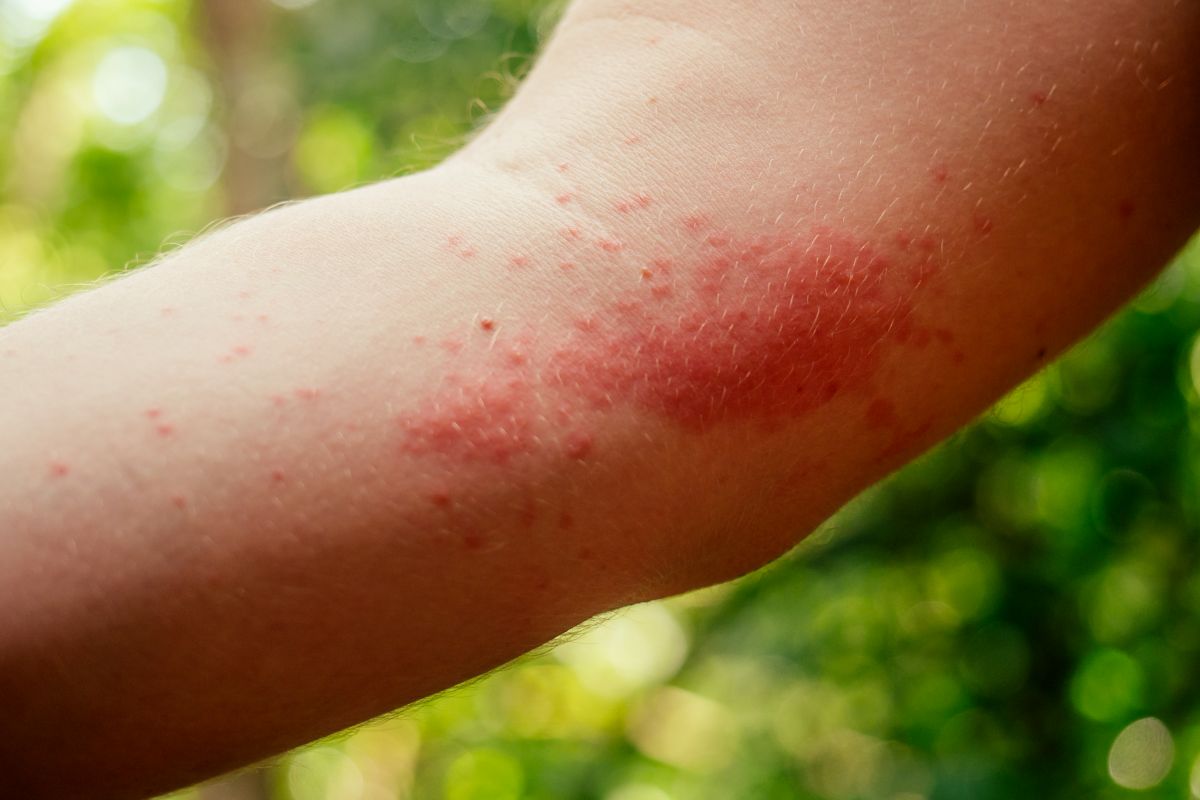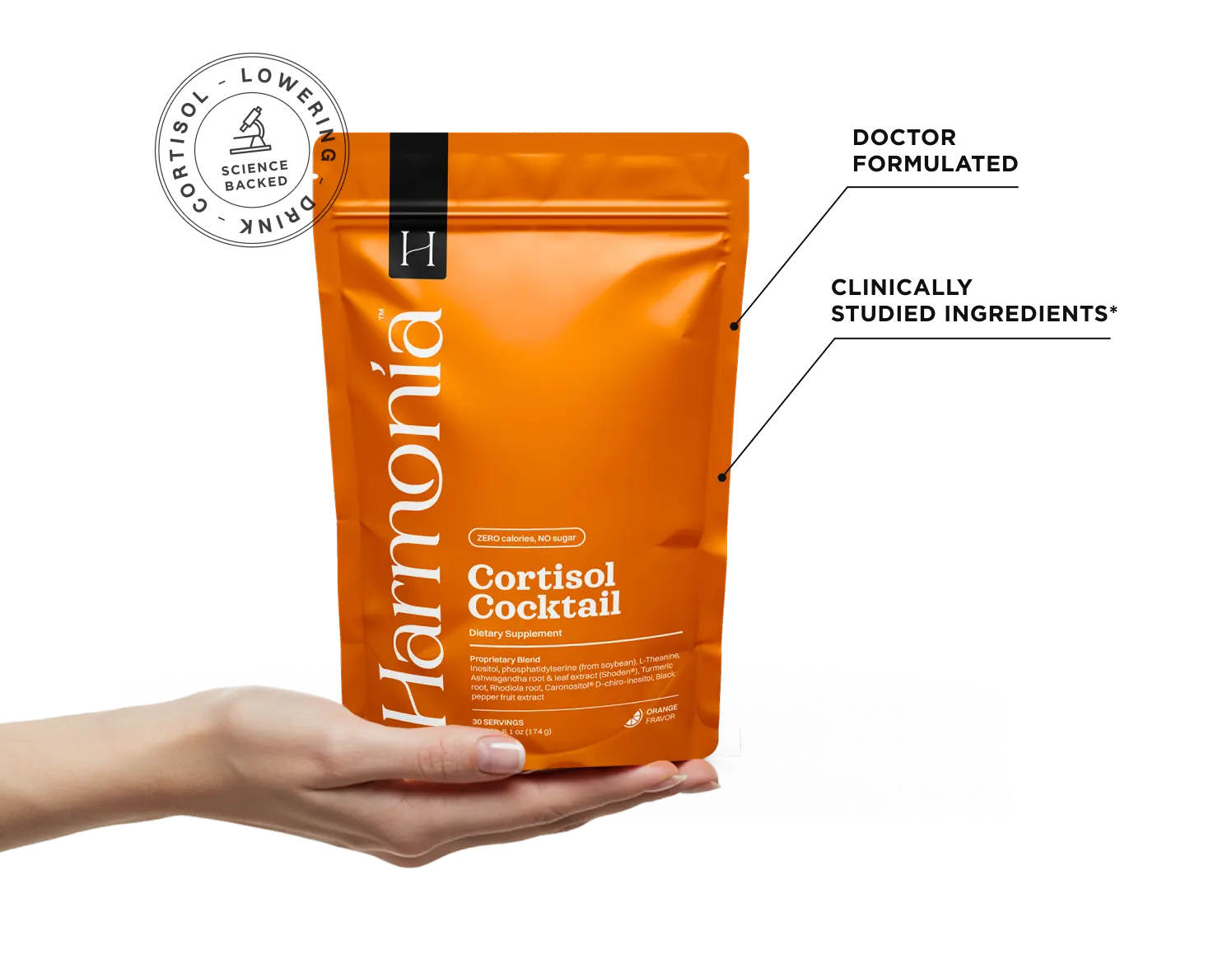You know that feeling - your mind’s racing, your heart’s pounding, and suddenly your skin starts to itch or burn for no reason. Red, raised bumps appear out of nowhere, almost as if your body is echoing the stress you feel inside.
These aren’t random breakouts - they could be cortisol hives, a skin reaction triggered by your body’s main stress hormone.
In a world where pressure rarely lets up, our hormones are constantly reacting to daily demands. For many women, that means cortisol levels stay high, leading not only to fatigue, poor sleep, and mood swings - but sometimes, visible signs of stress like hives.
What Are Cortisol Hives?
Cortisol hives are a type of stress-induced skin reaction that occurs when your body’s cortisol levels rise due to chronic tension, anxiety, or emotional overload.
Unlike allergic reactions, which are triggered by an external substance, stress hives are driven internally by hormonal and nervous-system changes.
When cortisol surges repeatedly, it affects your immune system and increases histamine - a compound that causes itching, redness, and swelling. The result? Itchy, red patches that appear suddenly, often during or after a stressful moment.
If you’ve ever wondered about “allergy hives vs stress hives,” here’s the key difference: allergy hives are your body reacting to a specific allergen like food or pollen, while stress hives stem from emotional and hormonal triggers.
This is why the connection between cortisol and hives is becoming more recognized - stress isn’t just mental; it’s biological.
Causes
When you’re under constant pressure, your brain tells your adrenal glands to release cortisol. In small bursts, cortisol is helpful - it gives you energy and focus. But when it stays elevated for too long, it can confuse your immune system.
High cortisol increases inflammation and histamine levels, which irritate the skin and blood vessels. That’s why high cortisol skin rash or hives caused by stress often flare up during hectic periods or emotional turmoil.
You might notice hives:
- During an anxiety episode
- After poor sleep or emotional stress
- During hormonal changes like PMS or menopause
- When feeling overwhelmed or fatigued
In contrast to allergic reactions, stress hives and allergy hives differ in timing and triggers. Stress hives usually appear after prolonged tension, while allergic hives show up shortly after exposure to a specific allergen.
Stress hives may also appear in unique areas - such as stress hives around eyes, neck, or stress hives on arms - and may fade once the stressor subsides.
Symptoms

If you’ve noticed your skin flaring up when life feels chaotic, you’re not imagining it. Here’s what stress hives look like:
- Raised, red or pink welts
- Intense itching or burning sensation
- Patches that move from one area to another
- Swelling around the eyes or lips
- Temporary marks that fade within hours or days
The symptoms of stress hives can vary - some people experience tiny bumps; others develop large blotches. You might wonder, “how do I know if I have stress hives?” The simplest clue: if your skin reactions coincide with stress, anxiety, or lack of rest, cortisol may be the culprit.
How to Tell If It’s Stress or an Allergy
It’s easy to assume every skin flare-up is an allergic reaction - after all, hives can look the same whether they’re triggered by peanuts or pressure from a tough week.
But not all hives come from allergens. Sometimes, your skin is simply reacting to emotional overload and elevated cortisol levels.
The key difference lies in what triggers the reaction and how long it lasts.
If your hives tend to flare up after stressful events - like a sleepless night, an argument, or an anxious week - and there’s no new food, skincare, or detergent to blame, your body may be reacting to stress hormones rather than allergens.
Think of it as your skin’s SOS signal: a physical reminder that your stress response needs care and balance.
By addressing cortisol levels and supporting your body’s natural calm - with lifestyle changes and cortisol-balancing support like Harmonia - you can help break the cycle before it shows up on your skin again.
Keeping Cortisol and Skin Calm
Calming stress hives requires a two-part approach: soothing your skin from the outside while restoring balance from within. Topical remedies can provide temporary relief, but lasting improvement comes from rebalancing the body’s stress hormones - particularly cortisol.
Short-Term Relief: Soothe the Skin
If your skin feels hot, itchy, or inflamed, focus first on immediate comfort:
- Apply a cool compress or take an oatmeal bath: Helps reduce swelling and irritation naturally.
- Use fragrance-free moisturizers: Strengthens the skin barrier and prevents further dryness.
- Practice deep breathing or short meditation: Activates the parasympathetic nervous system and helps lower cortisol within minutes.
- Stay hydrated: Water supports your body’s detox pathways and keeps skin resilient.
These steps soothe inflammation, but for true relief, the root cause - elevated cortisol - must be addressed.
Long-Term Healing: Calm Cortisol, Calm Your Skin

Stress hives are your body’s way of asking for rest and regulation. When cortisol levels remain high, the immune system becomes overstimulated, making skin more reactive. Lowering cortisol naturally can reduce both flare-ups and the frequency of hives over time.
Long-term strategies include:
- Adaptogens like Ashwagandha and Rhodiola Rosea: Help your body adapt to stress and stabilize cortisol output.
- L-Theanine: Promotes calm focus by supporting alpha brainwave activity and GABA production.
- Myo-Inositol: Balances hormones and supports mood - especially for women experiencing stress-related imbalances.
- Magnesium: Reduces cortisol levels, promotes relaxation, and supports better sleep.
- Turmeric with Black Pepper Extract: Combats inflammation and supports healthy skin function.
By consistently practicing stress management, prioritizing rest, and nourishing your body with these nutrients, you can retrain your system to stay balanced - even when life gets demanding.
For women dealing with recurring cortisol hives or stress-related skin issues, adding a daily cortisol-balancing supplement like Harmonia’s Cortisol Cocktail can offer gentle, ongoing support. It’s formulated with many of the same adaptogens and nutrients that naturally help calm your body, reduce inflammation, and keep your skin — and mood — clear and steady.
When to Seek Medical Help
If hives last more than a week, cause swelling around the lips or eyes, or make breathing difficult, consult a healthcare provider immediately. For most, though, managing cortisol and supporting your stress response can greatly reduce flare-ups and discomfort.
Conclusion
Your skin is often the first to reveal when something deeper is off. Cortisol hives are your body’s way of saying, “I need calm.”
By nurturing your stress response, sleeping well, and supporting your body with cortisol-balancing ingredients like those found in Harmonia cortisol drink, you can stop stress from showing up on your skin - and start feeling more balanced, energized, and at ease.
References
- Cantelmi, T., Lambiase, E., Unfer, V. R., Gambioli, R., & Unfer, V. (2021). Inositol treatment for psychological symptoms in Polycystic Ovary Syndrome women. European Review for Medical & Pharmacological Sciences, 25(5). Link.
- Cuciureanu, M. D., & Vink, R. (2011). Magnesium and stress. Magnesium in the Central Nervous System. Link.
- Tireki, S. (2021). Ashwagandha, Rhodiola rosea and Maca as Adaptogens. Modern Concepts & Developments in Agronomy, 8(5). Link.
- Tomaszewska, K., Słodka, A., Tarkowski, B., & Zalewska-Janowska, A. (2023). Neuro–immuno–psychological aspects of chronic urticaria. Journal of Clinical Medicine, 12(9), 3134. Link.
- Vuong, Q. V., Bowyer, M. C., & Roach, P. D. (2011). L‐Theanine: properties, synthesis and isolation from tea. Journal of the Science of Food and Agriculture, 91(11), 1931-1939. Link.







